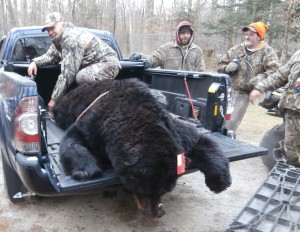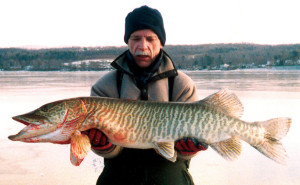In a recent news release, the Baker-Polito Administration announced that $317,243 in grants were awarded for wildlife habitat improvement projects totaling 534 acres in 13 Massachusetts communities. These municipal and private conservation efforts will work to improve habitats for native wildlife and increase opportunities for wildlife-dependent recreation.
Western Massachusetts will be receiving approximately 59% of those funds. The following landowners will receive these grants:
- Berkshire Natural Resources Council (Dalton and Hinsdale) – $18,000 – The BNRC will work to control invasive plants and improve floodplain forest along the Old Mill Trail.
- Massachusetts Forest Alliance (Ashfield and Hawley) – $47,950 – The Massachusetts Forest Alliance will create young forest habitat.
- Town of Lenox – 33,500 – The Town will work to combat the hardy kiwi invasive plant infestation.
- Nature Conservancy (Sheffield) – $23,640 – TNC will improve wetland and grassland habitats through the removal of woody plants on the Schenob Brook Preserve.
- The Trustees of Reservations (Sheffield) – $35,701 – The TTOR will restore grassland habitat through woody species removal and invasive species control on the West Grumpelt Parcel of Bartholemew’s Cobble Preserve.
- MassAudubon (Otis) – $29,213 – Mass Audubon will create new, and expand existing, shrubland habitat on the Cold Brook Wildlife Sanctuary.
“We are proud to provide municipalities, conservation organizations and private landowners the resources necessary to improve habitats for wildlife in need of conservation assistance, while enhancing recreational opportunities for people who enjoy hunting, bird watching and other outdoor activities” said Governor Baker.
In its second year, the MassWildlife Habitat Management Grant Program provides financial assistance to private and municipal landowners of conserved lands to improve and manage habitat for wildlife deemed in greatest conservation need and for game species. The projects will also expand opportunities for hunting, fishing, trapping, and other outdoor recreation, and complement the ongoing habitat management efforts on state lands.
“Wildlife in special need of conservation as well as game species will benefit directly from these habitat management activities,” said Department of Fish and Game Commissioner George N. Peterson, Jr. “In addition, the sporting community, birders, naturalists, and other wildlife enthusiasts will enjoy improved recreational opportunities.”
“The reality is that 80 percent of Massachusetts’ lands where wildlife is found are owned privately,” said Jack Buckley, MassWildlife Director. “It makes sense as an agency to promote and apply science-based habitat management activities with committed municipal and private landowners, thereby protecting their investment in wildlife and habitat.”
“Protecting and preserving our natural resources is a vital part of Massachusetts’ environmental programming and services,” said State Senator Adam G. Hinds (D-Pittsfield). “I appreciate the Administration’s support of these habitat improvement projects in Sheffield, Hinsdale, Ashfield, Otis and Lenox.”
“Improving and protecting wildlife management habitats is an important investment in maintaining the Commonwealth’s quality of life, and preserving a more sustainable environment which supports a diverse range of species and landscapes,” said State Representative Stephen Kulik (D-Worthington).
Report Winter Fish Kills
MassWildlife reminds us that the majority of the fish kills reported to them turn out to be natural events not caused by pollution. During the winter, ice and snow cover can cause low dissolved oxygen levels in ponds. Ice and snow can limit the amount of light that reaches the water column and interfere with photosynthesis and decomposition of organic matter, which in turn can decrease the amount of oxygen available to fish. That may result in winter fish kills. Weedy ponds that are less than 15 feet deep are particularly vulnerable.
Ice anglers may encounter signs of a low oxygen environment when they drill through the ice and notice the smell of rotten eggs or observe sluggish or dying shiners. The odor is hydrogen sulfide gas which is a natural byproduct of low dissolved oxygen environments, and is not likely the result of pollution. Oxygen levels should return to normal shortly after the ice melts in the spring.
If you observe dead fish, contact the Environmental Law Enforcement’s 24-hour radio room at (800) 632-8075. A MassWildlife biologist will review each situation to determine whether the kill is natural or requires a site investigation.
Corrections
In last week’s column about the gold pin freshwater fishermen, I erred twice. The first error showed Angler of the Year Joshua Christman holding a large carp, whereas the picture caption said that it was a bowfin. The second was where I listed Shaun Klammer of Adams as receiving two gold pins. One for having caught a 24 lb 14 oz Northern Pike out of Onota Lake in the Youth Catch and Keep category and another for catching a 43 inch Northern Pike also out of Onota Lake in the Catch & Release category. Shaun did catch the 24lb 14 oz pike but Jeff Klammer, Shaun’s father, caught the a 43″ pike. My apologies for both errors.
Regarding fishing families, I recommend you read this month’ s Massachusetts Wildlife magazine article entitled, A line that Binds; Fishing, Family and the Lure of the Rez, by editor Troy Gipps. The article was written about Val Percuoco’s fishing family. Val, you may recall, caught the 3 lb 8 oz state’s record white perch recently while fishing with her dad Vinny on Wachusett Reservoir. Val has fished with her dad and Uncle Paul and two sisters, Lynn and Nicole, since childhood. They have earned countless Sportfishing Award Program pins. Heck, Val’s younger sister Lynn has 20 pins of her own for 7 different species!
Ice Fishing Derby
The Ashfield Rod & Gun Club will be having a kid’s ice fishing derby on Ashfield Lake on Sunday, February 18. The free derby will run from 8:00 am to noon. All kids will receive a prize. Call Joe Miraglia (413) 628-4400 for more info.
Questions/comments: Berkwoodsandwaters@roadrunner.com. Phone: (413) 637-1818


